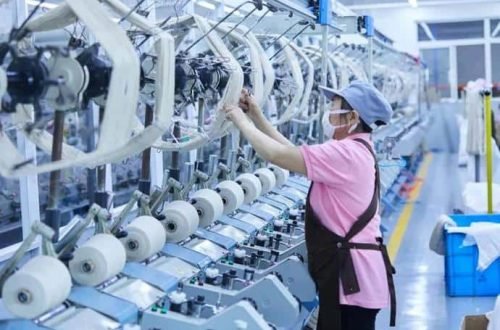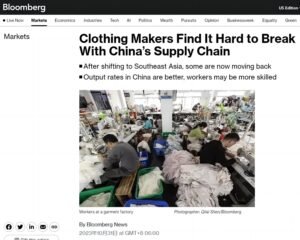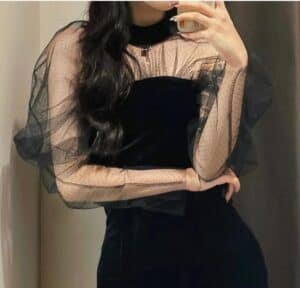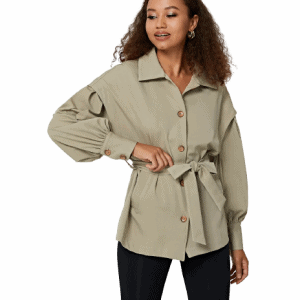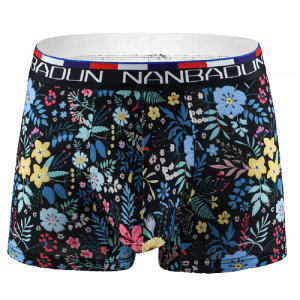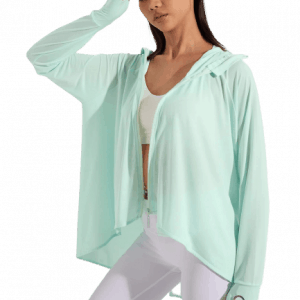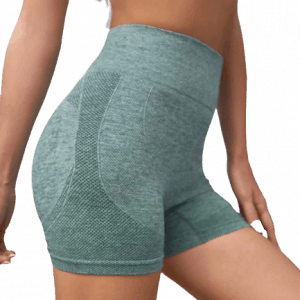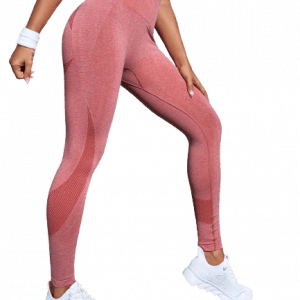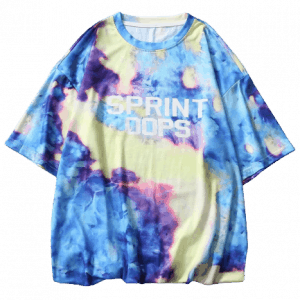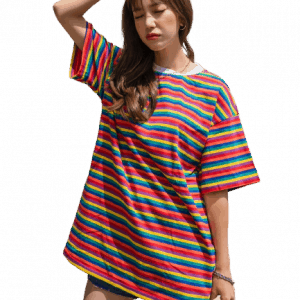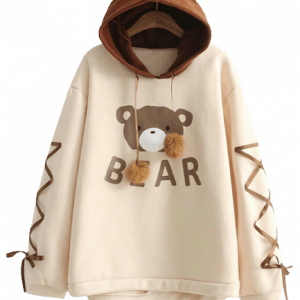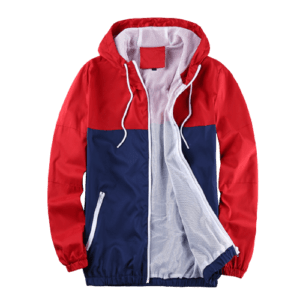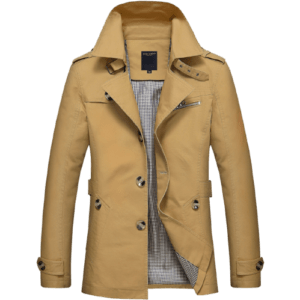1. What are the ways of garment manufacturing and processing?
Conventional garment manufacturing and processing is divided into light processing, packing materials processing, and full distribution processing.
- Light processing: The processing party provides exterior and secondary materials, and the two sides only talk about the processing fee. It is suitable for more mature operations of clothing enterprises or individuals, as well as suppliers of materials and accessories, and the corresponding procurement personnel, etc.
- Packing processing materials: The fabric is provided by the processing party. The accessories will also come from the processing party, including the processing method of processing fees. It is also suited for companies or individuals with mature fabric suppliers.
- Full distribution processing: In this, the fabric and auxiliary materials are the bases for the processing method in the processing plant. It is suitable for initial processing, small order companies, or individual wholesalers.
2. Types of garment manufacturing and processing
In garment manufacturing and processing, fabric handling is categorized into woven fabric processing and knitting fabric processing. Woven fabrics involved shuttle weaving. It utilizes a loom with a shuttle. The yarn goes through the warp and weft of the interleaved structure, and its arrangement generally has a plain weave. Twill and satin weaves have three categories and their structure changes. Due to the modern shuttle-less loom applications, this kind of fabric does not use a shuttle weaving form. But the fabric still belongs to shuttle weaving. The raw materials may include cotton, silk, wool, linen, chemical fiber, blends, interwoven fabric, and others. Employing woven fabric in clothing is the primary choice in terms of both variety and production quantity. Owing to the differences in styles, techniques, and other considerations, there are many variations in the garment manufacturing and processing steps and technological means for using woven clothing.
Knitted fabrics exhibit stretchability or elasticity, while some materials have poor tensile stability. Knitted fabrics have reasonable control and tensile strength. It allows garments to select lengths and placement according to needs. This is the fundamental reason why it is the choice for stretchable necklines, cuffs, suspenders, openings, and crotch areas. In production, they adapt themselves to the sewing materials’ tensile structure and elasticity. When collar placket pocket cuts are small, reinforcement by the use of a lining cloth is helpful. The strips prevent deformation and inconsistencies. The reason is that sometimes, single-sided weft plain combinations inconsistencies produced are more significant. In jacquard fabrics, the double-sided construction warp knitted fabrics, and there are little to no inconsistencies. It helps prevent shrinkage of the garment, especially in jerseys. garment manufacturing and processing production should consider various factors like permeability, moisture absorption, shear resistance, slip resistance, twisting, tangles, and pilling.
3. Stages of garment manufacturing and processing
Garment manufacturing and processing go through several stages. Here is a quick outline of the flow:
Incoming inspection of materials and accessories → technical preparation → cutting → sewing → keyhole buttonhole making → pressing → inspection of garments → packaging → warehousing or shipping
In garment manufacturing and processing, after the fabrics enter the factory, we should check the quantity, appearance, and characteristics. Only those that meet the production requirements will be utilized. Before large-scale production, there is a performance of technical procedures for preparation, including the arrangement of the process sheet, samples, and production of the sample. The sample can enter the next step in garment manufacturing and processing and production after the customer give confirmation. Fabrics are turned into semi-finished products after trimming and sewing. Some of the woven materials will be processed following special industrial specifications after this step. These include clothing washing, sand-washing, wrinkle effect processing, and others. Auxiliary procedures will come after the conclusion of the garment manufacturing and processing stages. Keyhole and nail buttoning and ironing are usually part of it. There will then be an inspection of the products, followed by packaging, and then sent to storage.
Purpose of fabric inspection
The excellent condition of the fabric quality is an integral part of the quality control of finished products in garment manufacturing and processing. By inspecting and measuring the incoming fabrics, a high level of quality of the garments can be efficiently followed.
Fabric inspection includes the checking of appearance and physical characteristics. The main test fabric is scrutinized for damage, stains, weaving flaws, color differences, and other issues. For sand-washed fabrics, there should be utmost care in checking on whether there are treatment defects, such as spots, creasing, and tears. The defects affecting the appearance should be marked appropriately during the inspection and not included in the materials for use in the garment manufacturing and processing stages.
The properties of fabric mainly include shrinkage rate, colorfastness, and weight in terms of grams per meter. In the course of inspection and sampling, cut-out pieces of specimens of variations and colors from various manufacturers should be taken for testing to confirm that the data is accurate throughout the garment manufacturing and processing operation.
Auxiliary materials brought into the garment manufacturing and processing factory should also be tested. Some of the main properties that should be checked are the shrinkage rate of the elastic tape, the bonding strength of the bonded liner, zipper movement smoothness, and others. The auxiliary materials that do not fulfill the required standards will not be part of the production and garment manufacturing and processing.
Preliminary technical preparation
Technical preparation prior to mass production must be performed appropriately. This stage of garment manufacturing and processing involves three components: the finalization of the process sheet, the readying of the sample, and the production of samples. Ensuring that large-scale production proceeds correctly and without any hitches is the main objective of technical preparation. As a result, the final product will comply with customer requirements and expectations.
In garment manufacturing and processing, the process sheet is a controlling document that guides all the activities. It contains the specific technical descriptions and requirements of the product. It includes sewing requirements, ironing conditions, packaging, and other pertinent information. It also explains details like garment accessories arrangement, stitching density, and others. Every stage in garment manufacturing and processing should be executed in exact compliance with the conditions specified in the process sheet.
Accurate sizing and complete specifications are vital in the sample-making stage in garment manufacturing and processing. The form and outline of the relevant parts have to match accurately. The sample should also have marks for the garment style number, part, specification, direction, and quality requirements pertaining to the silk grain. The sample composite seal should also be stamped on the appropriate stitching place.
Production of small-batch samples will proceed after the process sheets and the sample works requirements have been accomplished. It will be performed following the specifications required by the customer. Timely processing of corrections for discrepancies and prompt solving of difficulties must be maintained so that the main flow of garment manufacturing and processing operations runs smoothly. Once the customer has confirmed and signed off on the sample, it is then considered as one of the essential bases for inspection and verification in the garment manufacturing and processing project.
Cutting technical requirements
Before the cutting stage in garment manufacturing and processing, it is necessary to draw the discharging chart according to the sample. The fundamental principle followed in discharging is “Complete, reasonable, and economical.” The foremost technological requirements in the cutting process are the following:
(1) When dragging material, determine the accurate figure, and be cautious to prevent errors.
(2) In order to prevent color differences for the same garment, the varying batches of dyed or sand-washed fabrics require grouping. Color difference discharge causes color differences in fabrics to occur.
(3) While discharging, closely guard whether the silk strands of the fabric are straight and whether the arrangement of the silk strands of the garment pieces meets the process requirements. The velvet fabrics (such as velvet, corduroy, etc.) should not discharge in a backward direction. Otherwise, it will affect the color depth of the clothing.
(4) For fabrics with plaid designs, it is critical to carefully watch the position and alignment of the bands for every layer when dragging the material to guarantee the coherence and symmetry of the clothing.
(5) Precise cutting must be followed, as well as maintaining straight and smooth lines. Ensure that the spread type is not too thick, and the layers on the top and bottom of the fabric must not be biased.
(6) Ensure that the cutting of the knife edge follows the set mark of the template.
(7) There must be no effect on the appearance of the garment when using taper hole marking. The quantity should be determined and examined, and the clothes should be piled up and packed according to the specifications after cutting. The tag should be affixed to clearly show the style number, parts, specifications, etc.
Lock button nailing
In garment manufacturing and processing, machines usually perform the task of making keyholes and buttonholes in clothing. Buttonholes are classified based on their shape: flat or eye-shaped holes. The latter is also called sleeping holes or pigeon holes.
Ironing and flattening
There is a saying that it is “30% sewing and 70% ironing” in making garments. This phrase emphasizes the idea that ironing is a crucial stage in garment manufacturing and processing. The three primary functions of ironing are as follows:
(1) Spraying and ironing will properly press out the wrinkles and creases on the cloth and flatten the folds and seams.
(2) The clothing will be flat and have a clean appearance, as well as straight pleats and lines following heat setting treatment.
(3) Through “return” and “pull” ironing techniques, changes to the length and density of the fiber caused by shrinkage are made accordingly. It is also for the adjustment of the direction of the fabric warp and weft arrangement to achieve fashion the three-dimensional form of the clothing. This form is necessary to adapt to the requirements of human body shape and movements. In the end, the garment will look good and beautiful, as well as comfortable to wear.
Temperature, humidity, pressure, and time are the four basic elements that affect the pressing of fabric in garment manufacturing and processing. The temperature applied in ironing is the main factor that affects the fibers of the cloth in the garments. Mastering the application of appropriate temperature for ironing on various fabrics is the main challenge in finishing garments. If the heat is too low or not enough, there will be no significant ironing effect. If the temperature used in ironing is too high or too much, there will be damage to the clothes.
Garment inspection
The inspection of the clothing should be conducted throughout the cutting, sewing, keyhole nail-making, ironing, and other stages of garment manufacturing and processing. A complete evaluation of the finished products before packaging and warehousing is necessary to determine and guarantee quality.
Finished-product inspections in garment manufacturing and processing focus on the following:
(1) Whether the style matches the confirmed sample;
(2) Whether the size and specifications comply with the required conditions and specifications on the process sheet and sample;
(3) Whether the stitching is accurate, and the sewing is neat and flat;
(4) Whether the clothing of the mesh fabric is appropriate.
(5) Whether the thread of the fabric matches and if there are flaws or stains;
(6) Whether there are issues with color differences in the same garment;
(7) Whether the ironing is done correctly;
(8) Whether there are problems with the hold of the adhesive lining, especially if there is any glue infiltration or leakage;
(9) Whether there was appropriate mending of the thread ends;
(10) Whether all the accessories are fully and properly sewn;
(11) Whether all the actual contents of the goods have correct and consistent size marks, washing instructions, and trademarks, including the positioning;
(12) Whether the comprehensive appearance of the clothing is in good condition, and;
(13) Whether the packaging follows the specified conditions.
Finished product packaging
In garments processing, there are two classifications for packaging: hanging and boxing. In boxing packing, it is generally divided into inner and outer packing. Inner packing refers to placing one or more garments in a plastic bag. Product style and size should be consistent with those specified on the bag. Packaging should be neat and pleasing. Sometimes special styles of clothing have some special treatment inside the packaging. For example, wrinkled-style garments may be wrapped in a particular way to maintain their style.
Outer packing in garment manufacturing and processing, meanwhile, generally refers to packaging in cartons. The sizes and colors must comply with the customer’s requirements and process the order. There are also specific color codes to be followed. When packing, the amount should be complete, and arrangement size and color and are accurate. Carton marks must be printed clearly on the outer boxes, indicating the essential shipping details such as customer, port of shipment, package number, quantity, place of origin, and so on. Naturally, the contents written must be in conformity with the actual goods.
The meaning of “trouser shape”
In our garment manufacturing and processing industry, the trouser shape is also called the pattern. Simply put, it is basically the pattern followed for the clothes in garment manufacturing and processing.
In a garment manufacturing and processing factory, the design requirements for trousers are relatively high. The requirements for details of trousers need to be precise in garment manufacturing and processing. If the size is one centimeter less than or smaller, the actual production results may be quite different.
While the style of the pants directly determines the style of the sample, the general regular clothing version is the reference of the national standard data, and each garment manufacturing and processing factory has its own specific data on this basis.

